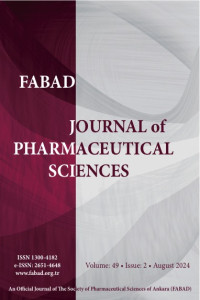Abstract
Project Number
-
References
- Humblet, O., Birnbaum, L., Rimm, E., Mittleman, M. A., & Hauser, R. (2008). Dioxins and cardio- vascular disease mortality. Environmental health perspectives, 116(11), 1443–1448. https://doi. org/10.1289/ehp.11579
A Network Toxicology Analysis of the Molecular Pathways and Novel Targets in TCDD-Induced Cardiovascular Toxicity
Abstract
2,3,7,8-Tetrachlorodibenzo-p-dioxin (TCDD), an environmental contaminant, disrupt multiple systems including endocrine, immun, nervous, reproductive, developmental, and cardiovascular. This study aimed to identify the molecular pathways and potential therapeutic targets for TCDD-induced cardiovascular toxicity using CTD, ShinyGO, STRING, GeneMANIA, ChEA3, MIENTURNET, and Cytoscape computational tools. The analysis identified the AGE-RAGE signaling pathway, blood circulation, and cytokine receptor binding as the top3 among 10 key molecular pathways, biological processes, and molecular functions associated with TCDD-induced cardiovascular toxicity. Additionally, 10 hub proteins/genes were found to play a critical role, with NFKB1 being the most important regulating transcription factor and hsa-miR-19a-3p and hsa-miR-125b-5p as the most crucial microRNAs. This study sheds light on the molecular mechanisms underlying TCDD-induced cardiovascular toxicity, revealing novel potential targets for therapeutic intervention.
Ethical Statement
-
Supporting Institution
-
Project Number
-
Thanks
-
References
- Humblet, O., Birnbaum, L., Rimm, E., Mittleman, M. A., & Hauser, R. (2008). Dioxins and cardio- vascular disease mortality. Environmental health perspectives, 116(11), 1443–1448. https://doi. org/10.1289/ehp.11579
Details
| Primary Language | English |
|---|---|
| Subjects | Toxicology |
| Journal Section | Research Article |
| Authors | |
| Project Number | - |
| Publication Date | August 25, 2024 |
| Submission Date | April 22, 2024 |
| Acceptance Date | July 19, 2024 |
| Published in Issue | Year 2024 Volume: 49 Issue: 2 |


